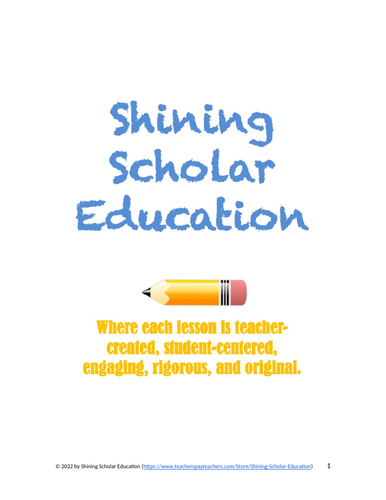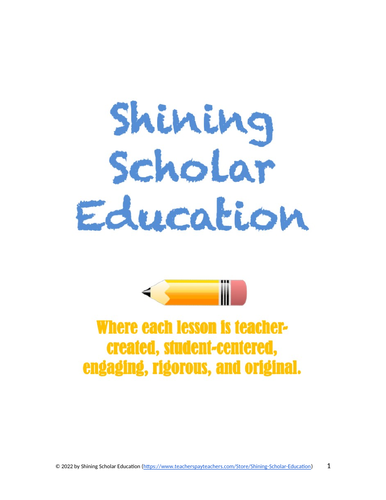Shining Scholar Education
Hello! I am a passionate teacher and writer that loves to create lessons that are interactive, student-centered, original, and truly help teachers & students. I make custom lesson plans and materials that engage students and help them take ownership of their learning. I have 10 years of teaching experience in upper grades across all subjects (including teaching abroad in Costa Rica!). I have published three books, The Little Book of Big Quotes Vol. I , The Poems Vol. I, and Got the Flow: The Hip




















